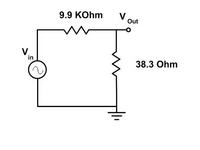Monady
Advanced Member level 4
Hi dear all friends,
I had a problem with some of my measurements and then I decided to check experimental setup. I Used a small resistor (38.3Ω) in my circuit in series with signal generator and read its voltage for finding amount of current passed through circuit. But results weren't acceptable. So I put this resistor in a very simple circuit (attached pic) for testing my equipments (Probes, oscilloscope, resistors, ....).
I attached two oscilloscope probe tips to the Vin, and Vout. According to the oscilloscope manual, probe capacitance is 17pF in x10 mode. I got different values for output voltage, as written below, but I don't know what is the source of this problem. I think it is an acceptable assumption that resistor value doesn't change over frequency range. I'd appreciate it if anybody give me a hint.
@ 1MHz: Vin=18.4V Vout=73.6mV
@ 5MHz: Vin=18.4V Vout=108mV
@ 10MHz: Vin=18.4V Vout=182mV

I had a problem with some of my measurements and then I decided to check experimental setup. I Used a small resistor (38.3Ω) in my circuit in series with signal generator and read its voltage for finding amount of current passed through circuit. But results weren't acceptable. So I put this resistor in a very simple circuit (attached pic) for testing my equipments (Probes, oscilloscope, resistors, ....).
I attached two oscilloscope probe tips to the Vin, and Vout. According to the oscilloscope manual, probe capacitance is 17pF in x10 mode. I got different values for output voltage, as written below, but I don't know what is the source of this problem. I think it is an acceptable assumption that resistor value doesn't change over frequency range. I'd appreciate it if anybody give me a hint.
@ 1MHz: Vin=18.4V Vout=73.6mV
@ 5MHz: Vin=18.4V Vout=108mV
@ 10MHz: Vin=18.4V Vout=182mV
